Micro Sprinklers In Kenya
Micro sprinklers in Kenya by Grekkon Limited are low-pressure, low to medium volume irrigation equipment that are ideal for micro-irrigation. They deliver water directly to the crop root zone, in a uniform manner. They provide full scale surface irrigation, and localised watering of crops. Micro sprinklers are used for; fruit tree, lawn, hedge, and small garden irrigation
Micro sprinkler price in Kenya
The unit cost of all types of sprinkler jet micro sprinklers at Grekkon Limited is from Kes 100 at any of our branches nationwide. Micro sprinkler price per acre is a factor of the number of units used, which depends on the crop spacing. For instance tree tomato spaced at 2M x 2M will require a higher number of micro sprinklers than avocado spaced at 6M x 5M
Each unit is composed of 3 parts; the sprinkler, the 8mm diameter connecting tube, and a 1-1/2′ long plastic support stand
Micro sprinklers save water through high application efficiency, and uniformity of spray. They are a substitute for button drippers where drip irrigation is impractical, but create a larger wetted area than drip irrigation. Micro sprinkler irrigation provides low precipitation which allows for longer watering time with low run-off. They are available in a wide range of plastic configurations. Micro sprinkler sets are used with fertigation systems which save on fertiliser application labour cost. They are also light in weight and small in size, which makes them highly portable, and easy to install
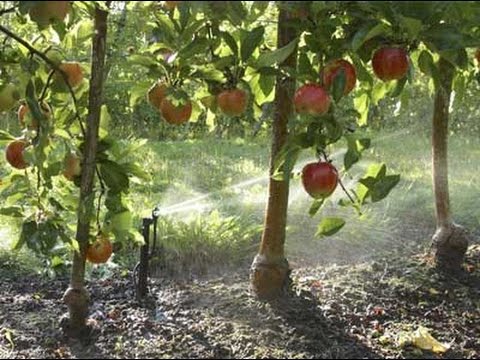
Micro sprinklers watering an apple crop
What is micro sprinkler irrigation?
It is micro irrigation through the adoption of sprinkler jet micro sprinklers, set at the base of the plant
Micro Sprinklers In Kenya
Coverage:
Micro sprinklers coverage is a factor of; flow rate, wetting diameter or radius, and the wetting degree.
1. Operating pressure; from 15M head / 1.5 bar – 20M head/ 2 bar. Pressure lower than this will cause the micro sprinkler to release large droplets, or cease rotation. These droplets will be unhelpful, or even destructive to the work undertaken
2. Flow rate 40 litres per hour
3. Irrigation degree; available as 90, 180, and 360 degrees
4. Irrigation dimeter; 1.5M to 3.5M. This is an important factor to note during installation because it guides on the spacing of one sprinkler jet micro sprinkler to another
Micro sprinklers work when positioned upright, or upside down. Upright when they’re standing on the ground for normal irrigation. Upside down when set in a greenhouse, or open field crop to provide humidity to a mature crop or seedlings. This upside down placement is also for keeping plant foliage moist, or for overhead irrigation.
They deliver irrigation water through micro tubing to a series of nozzles attached to risers. They have small to medium sized droplets with good uniformity of coverage, and lower precipitation rate.

How to space micro sprinklers
Micro sprinklers placement is in such a manner that the sprays overlap. If for instance the irrigation diameter is 1.5M, the distance between micro sprinklers will be 2.25M. This ensures that there are no dry spots in between. An overlap ensures full coverage particularly for lawns, hedges or very closely spaced crops
How to use micro sprinklers with fruit trees
Our micro sprinklers for orchards are installed this way: Set one micro sprinkler per tree, 30cm or 1 foot from the base of the tree trunk being irrigated. Unlike online or button drippers which work well with gravity, a water pump will be necessary when irrigating with many micro sprinklers. This is because they need an operating pressure of 15M – 20M head, which is best achieved by a water pump

How much water do micro sprinklers use?
They use a maximum of 40 litres per hour
Micro Sprinklers In Kenya
FAQs
1. How effective is micro sprinkler irrigation?
It reduces water usage by 25% to 40% compared to impact or rain gun sprinkler irrigation, and by 45% to 60% when compared to surface irrigation. They provide uniform water application which ensures uniform growth and crop maturity
2. How far apart should sprinkler jet micro sprinkler be?
It should be less than the radius of their spray. See details above under the heading how to space micro sprinklers
3. When do you use a micro sprinkler?
Like drip irrigation, they are great for water conservation. However, unlike drips they create a humid micro climate around the crop, which is important in the control of certain pests such as spider mites, arphids, and thrips,
4. What are the disadvantages of micro sprinkler irrigation?
4.1. The tubes get clogged more easily than those of an impact sprinkler or rain gun sprinkler. This is because they are much smaller than those of other sprinkler types
4.2. They are more expensive to install than drip lines, or button drippers
4.3. They require higher operating pressure than drip lines, or button drippers, hence the need to invest in a water pump
4.4. They require a higher level of expertise during installation than button drippers, or drip tapes
4.5. The rate of water loss due to evaporation is higher than with a button dripper, or drip irrigation system
4.6. Many units are required per unit of land compared to other larger sprinklers
5. How do micro sprinklers work?
They have micro tubings which deliver water to small openings that release it at a slow rate, as fine particles. They apply water directly to the soil surface allowing it to percolate under low pressure
6. How far do micro sprinklers spray?
1.5M to 3.5M diameter
7. What are the components of a micro-irrigation system?
7.1. A pumping station to provide the right pumping pressure
7.2. A filtration system to capture any debris or dirt that will clog the system
7.3. Mainlines. These are the pipes originating from the pumping station, and feeding the sub-main lines. They are the largest pipes
7.4. Sub-main lines. These are the pipes origination from the main lines, and feeding the laterals. They are smaller in diameter than the main lines
7.5. Laterals. These the pipes connecting to the sub-main lines, to which the micro sprinklers are attached. They are the smallest pipes in diameter
These pipes will be either be of the high density polypropylene (HDPE), or poly vinyl chloride PVC type
7.6. Hydrants. These are the irrigation control units in the field from which water is channelled to various blocks
7.7. Venturi system. This is a chemigation and/or a fertigation unit connected to the main line. It is the point from which soluble fertiliser and drenching pesticides are fed into the irrigation system
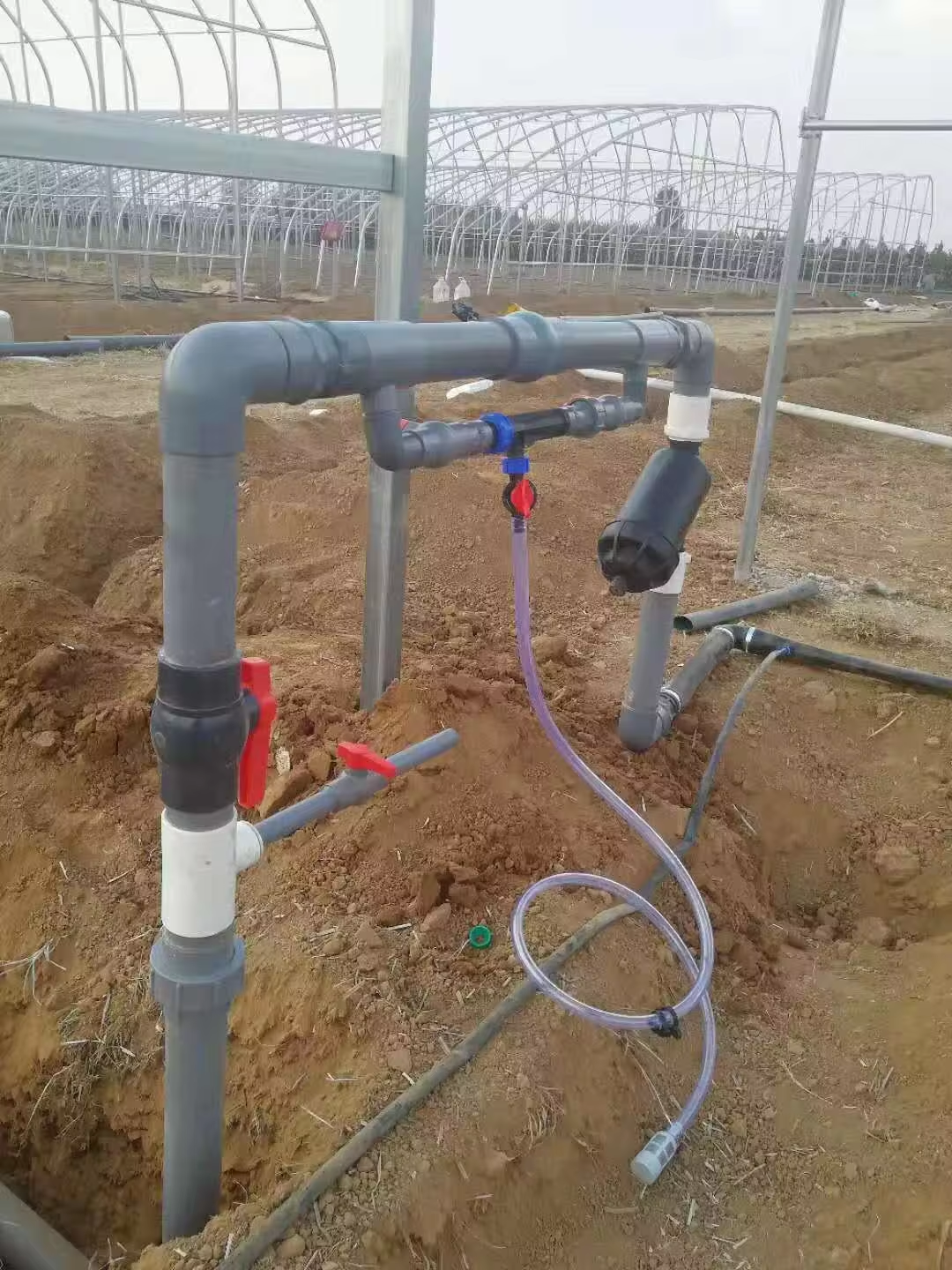
A venturi fertigation – chemigation unit being set up in an upcoming vegetable farm by Grekkon Limited
7.8. The sprinklers. They water the crops directly
8. How long to run micro sprinklers in Kenya?
35 to 45 minutes is sufficient time at optimal flow rate and working pressure
9. What is the difference between drip irrigation and micro sprinklers?
Drip irrigation is for closely spaced crops that require targeted irrigation. Micro-sprinkler irrigation is for sparsely spaced, larger crops or crops that grow best under overhead irrigation
10. What is the difference between mini and micro sprinklers in Kenya?
Mini sprinklers are larger, with a greater flow rate and operating pressure to cover a bigger area. They are better for smaller plants or landscape irrigation
Pixie Orange Farming And Irrigation
Pixie orange farming and irrigation in Kenya is a high investment, high returns farming venture. Pixies originate from California, USA where they were developed as a cross between oranges and tangerines. They are yellow-orange in colour, sweet and seedless fruits rich in vitamin C. They boost the immune system and increase collagen production which is great for the skin. In this piece, we answer commonly asked questions on pixie orange farming and irrigation by growers in Africa
1.How do you grow pixie oranges in Kenya?
They grow in most soils, but the best are deep (at least 18 inches or 42 cm deep) fertile sandy loams with a pH range of 6.5 – 7.3
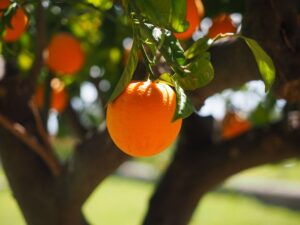
Ripe pixie oranges on a tree
2. How do you plant pixie oranges?
The dimensions of the planting holes are 2ft x 2ft x 2ft. This allows for water conservation and deep root penetration as the tree grows. mix the top soil thoroughly with well decomposed manure especially in weak soils
3. What is the spacing for pixies?
Row to row 5M, plant to plant 4M to give an average population of 200 plants per acre. A mature full-sized tree tree is 6M – 9M tall, and equally wide with an extensive root system

A mature well spaced pixie orange crop
4. How long do pixie oranges take to grow out?
Pixie oranges take 2 years to their first fruiting season, but full maturity is between 3 -5 years
4. How many oranges will one tree produce?
The first fruits (30 – 50 fruits) come in the second year, then 250 -300 in the third to fifth years. By the eighth year, the tree bears 500 -600 fruits annually. To produce this commercial quantity all year round, irrigation must be undertaken
5. How many pixie orange trees per acre?
200 trees on average
How To Irrigate Pixie Oranges In Kenya
Pixie oranges require a high amount of water to grow because they are ever green. Under rain fed production, it will be at least 1,000mm of rain annually. However, to produce commercially, irrigation will be done to supplement rain. A tree will have 20 litres at planting, and thereafter, ensure that the soil is consistently moist, but not soggy. The root system must not be allowed to dry out, and neither should there be standing water. Irrigation is at the root zone, away from the trunk
Pixie Orange Farming And Irrigation
Methods
I. Sprinkler Irrigation
Micro sprinklers at the base of the plant are the most efficient or all overhead irrigation methods. Micro sprinklers are low-pressure, low to medium volume irrigation equipment that deliver water directly to the crop root zone. They provide full scale surface irrigation, and localised watering of trees
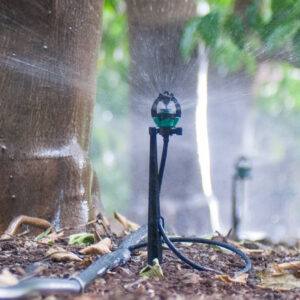
Micro sprinklers installed by Grekkon Limited in an orchard
II. Button drippers
This is the most water conserving and efficient irrigation system. The water loss to evaporation is less than that of micro-sprinklers, and it requires lower pressure to operate
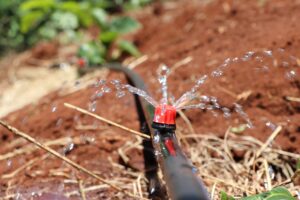
A button drippers system installed by Grekkon Limited at work in a newly established fruit farm
